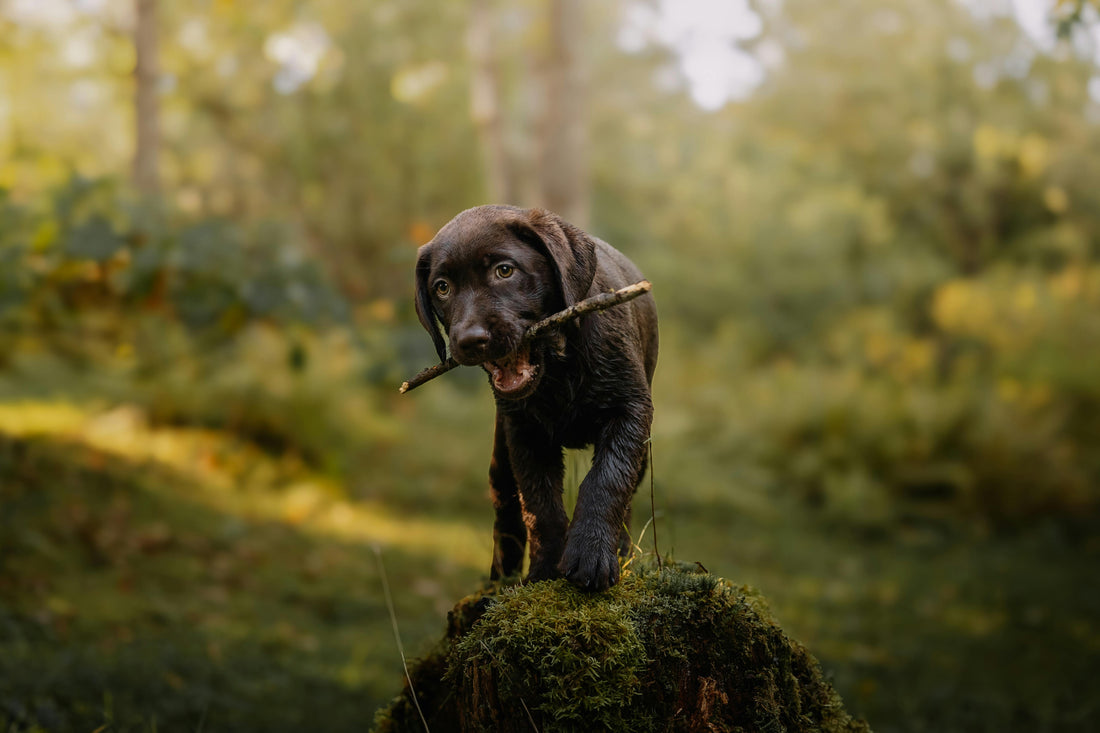
From Puppies to Seniors: The Ultimate Dog Training Timeline
Share
Training a dog is not just about teaching tricks or obedience—it’s about nurturing a well-behaved, confident, and happy companion. But when should you start training your dog? The truth is, training is a lifelong journey, with different stages requiring different approaches. In this guide, we’ll explore the best ages to begin dog training, different types of behavioural training, and how to maintain good behaviour over the years.
Starting Early: Puppyhood (8-16 Weeks)
The best time to begin training is as early as possible, ideally when a puppy is between 8 and 16 weeks old. At this stage, their brain is like a sponge, absorbing everything around them. Early training should focus on socialisation and foundational behaviours.
Key Training Focus Areas:
-
Socialisation: Exposing your puppy to various people, animals, sounds, and environments prevents fear-based aggression and anxiety later in life.
-
Basic Commands: Teaching commands like “sit,” “stay,” and “come” establishes communication and structure.
-
Toilet Training: Consistent schedules and positive reinforcement help puppies learn where and when to relieve themselves.
-
Bite Inhibition: Encouraging gentle play and redirecting biting to toys prevents future nipping problems.
Example: If a puppy starts chewing on furniture, immediately redirect them to a chew toy and praise them for using it. This helps them associate toys—not furniture—with chewing.
The Juvenile Phase (4-6 Months)
Between 4 and 6 months, puppies begin testing boundaries, much like a teenager. This is a crucial period to reinforce training and introduce more advanced concepts.
Key Training Focus Areas:
-
Lead Training: Teaching proper lead manners prevents pulling and makes walks enjoyable.
-
Impulse Control: Games like “leave it” and “wait” instil patience and prevent impulsive behaviours like lunging at food.
-
Crate Training: Helps with house training and provides a safe space for your dog when needed.
Example: If a puppy pulls on the lead, stop walking and wait until they return to your side. Reward them with praise and continue walking. Over time, they learn that pulling doesn’t get them anywhere.
Adolescence (6-18 Months)
As dogs hit adolescence, they may exhibit stubbornness, selective hearing, and increased energy. This stage requires patience and consistency.
Key Training Focus Areas:
-
Reinforcing Basic Commands: Ensuring that previous lessons aren’t forgotten during this rebellious phase.
-
Off-Lead Training: Practising recall in safe, enclosed areas builds trust and responsiveness.
-
Preventing Bad Habits: Addressing behaviours like excessive barking, jumping, or resource guarding before they become ingrained.
Example: If a dog jumps up to greet people, teach them to sit for attention instead. Ignore them when they jump, but reward them when they sit calmly.
Adult Dogs (1-3 Years)
By adulthood, most dogs understand basic commands, but that doesn’t mean training should stop. Continuing education is crucial to maintaining discipline and introducing new skills.
Key Training Focus Areas:
-
Advanced Commands: Training tricks like “roll over” or agility exercises keep their minds engaged.
-
Behavioural Adjustments: Addressing any lingering issues such as lead reactivity or separation anxiety.
-
Continued Socialisation: Regular exposure to new experiences prevents fearfulness and aggression.
Example: If an adult dog barks excessively at visitors, teach them the “quiet” command using positive reinforcement and practise controlled greetings.
Senior Dogs (7+ Years)
Older dogs may not require intensive training, but keeping their minds and bodies active is essential.
Key Training Focus Areas:
-
Mental Stimulation: Puzzle toys and scent games keep their cognitive functions sharp.
-
Adapted Physical Training: Low-impact activities like gentle obedience refreshers or slow-paced walks maintain mobility.
-
Reinforcing Commands: A lifetime of practice ensures they remain responsive and well-behaved.
Example: If a senior dog becomes anxious when left alone, reinforcing “stay” and using calming techniques can help ease their stress.
How Long Should You Train a Dog?
Training is a lifelong process. While the most intensive training happens in the first year, regular reinforcement should continue throughout a dog’s life. Here’s a general guideline:
-
Daily training (5-10 minutes) in puppyhood and adolescence.
-
Weekly refresher sessions in adulthood.
-
As-needed reinforcement for senior dogs to keep skills sharp.
Consistency is key. Just like humans, dogs can forget behaviours if they’re not regularly practised.
Final Thoughts
Dog training isn’t just about obedience—it’s about fostering a strong bond between you and your canine companion. Starting early, maintaining consistency, and adapting to their needs as they age ensures a well-behaved and happy dog for life. Whether you have a playful puppy, an energetic adolescent, or a wise senior, every stage presents an opportunity to strengthen your relationship and reinforce good behaviour. Keep training fun, use positive reinforcement, and enjoy the journey of raising a well-mannered pup!
